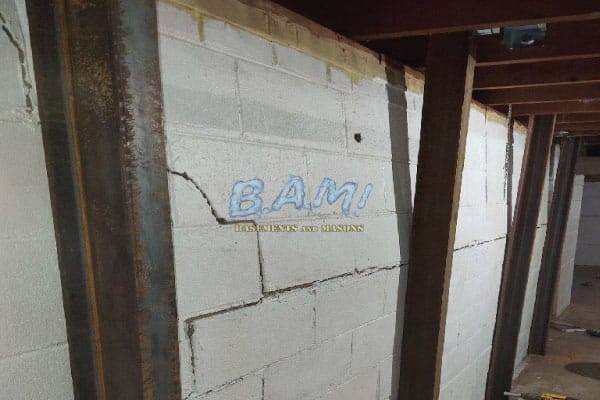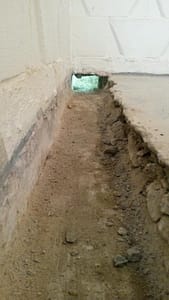Some Known Questions About Best Basement Waterproofing.
Some Known Questions About Best Basement Waterproofing.
Blog Article
The Of Best Basement Waterproofing
Table of ContentsThe Ultimate Guide To Best Basement WaterproofingHow Best Basement Waterproofing can Save You Time, Stress, and Money.Some Known Incorrect Statements About Best Basement Waterproofing The Best Basement Waterproofing Statements
What creates water damage concerns in your basement? Right here are a couple of things to try to find: when the foundation of your home is endangered, water is great at creeping in between little cracks and crevices and causing damages. Pipes that line the within your wall surfaces are simply one example of where water damages can take place.The dirt and ground of your home is extremely important. If there is too much water surrounding your home, nevertheless, it can press the dirt into your home and create the seals of your cellar to come to be jeopardized. when you see excess water in position where it must not be, that is an excellent indicator that you have an issue.
You apply the covering with a heavy brush made with bristles swirled throughout application for an attractive, finished look. Concrete water resistant finishings can't be applied to formerly repainted surfaces Silicate-based concrete sealants, also understood as densifiers, are also suitable only for wall surfaces that haven't been painted or sealed.
Indicators on Best Basement Waterproofing You Need To Know
Since these are penetrating sealants, they can't flake off or peel, and you can have paint used over them. The American Eagle group may discover extra difficult reasons for your wetness concerns; there are added solutions readily available. Plastic sheets and panels may be incorporated with interior cellar drain systems. They do not stop water from making it through the wall surface, but they do stop it from messing up points in the basement.
A sump pump is needed to relocate water out of your basement. In order to properly advise a remedy for your wet basement, call American Eagle for a no-obligation see. Our service technicians will have the ability to describe which services are alternatives for your home. Why should you waterproof your basement? Below are a couple of points the experts can set up to assist the waterproofing process: this is created for the wall surfaces of your basement.

Cellar waterproofing is a fantastic means to get in advance of prospective water damage that might come your means.
Facts About Best Basement Waterproofing Revealed
When it comes to safeguarding your home, among one of the most crucial actions you can take is cellar waterproofing. A completely dry cellar not just guarantees a secure and healthy and balanced environment for you and your family members, yet it also helps to avoid expensive water damages and mold and mildew growth. In this article, we will certainly discuss the significance of cellar waterproofing, the benefits it supplies, and just how you can set about securing your space.

When it concerns basement waterproofing, there are several methods that can be made use of to maintain water out of your room. These consist of indoor sealers, exterior waterproofing membrane layers, and water drainage systems. The very best approach for your cellar will depend upon elements such as the level of water breach, the condition of your structure, and your budget plan.
Finally, cellar waterproofing is a crucial action in shielding your home from water damage, mold and mildew development, and various other problems. By spending in cellar waterproofing, you can make sure that your area continues to be completely dry, safe, and healthy for you and your family. Not just does basement waterproofing give assurance and defense for your home, however it can also increase its value and save you cash on energy expenses over time.
The 10-Second Trick For Best Basement Waterproofing
Inside sealants are a kind of cellar waterproofing technique that entails applying a sealant to the within the cellar wall surfaces and floors. Water can leak into a cellar through fractures, spaces, or porous concrete, specifically in locations where there is high groundwater or poor water drainage. This can lead to water damage and mildew growth, in addition to damages to the structure and structural honesty of the structure.

It is an effective remedy for stopping water damages and preserving the architectural honesty of the structure. It can be pricey and disruptive to set up, as it requires excavation around the structure and may entail landscape design and various other fixings once the waterproofing is complete. This technique is the most trusted and durable option for protecting against water infiltration in the cellar.
Structure split injections are an approach of repairing fractures in the foundation wall surfaces from the within, without excavating the soil around the structure. The process involves injecting a fluid click polyurethane or Click Here epoxy right into the fractures, which after that hardens and produces a waterproof obstacle that protects against water from permeating via. This method is normally used for smaller fractures that do not present an architectural danger, and can be completed rapidly and with minimal interruption to the structure's passengers.
Report this page